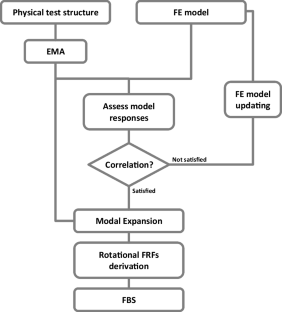Frequency Based Substructuring and Coupling Enhancement Using Estimated Rotational Frequency Response Functions
Abstract
Accurate estimation of rotational frequency response functions (FRFs) is an essential element of successful structural coupling. It is well known that the experimental estimation of structural excitations is very difficult with current technology. This paper proposes a scheme to improve the performance of the frequency-based substructuring (FBS) method by estimating unmeasured FRFs, including those corresponding to rotational degrees of freedom, from a set of experimentally determined translational FRFs. More specifically, the modal parameters extracted by modal analysis (EMA) from the experimentally determined FRFs are used for model updating, modal expansion and FRF synthesis. For this purpose, an approximate modelling approach is proposed, where a simplified and approximate finite element model (ASFE) is developed and updated to accurately reproduce the experimental responses. A modal expansion basis is then constructed from the ASFE to expand the mode shapes using the system equivalent reduction and expansion process (SEREP). FRF synthesis is then used to derive unmeasured translational and rotational FRFs. The synthesised FRFs within the frequency range of interest agree well with the experimental FRFs. The synthesised full FRF matrix is then used with the FBS method to derive the response model for the coupled structure in a bottom-up modelling approach.



 求助内容:
求助内容: 应助结果提醒方式:
应助结果提醒方式:


